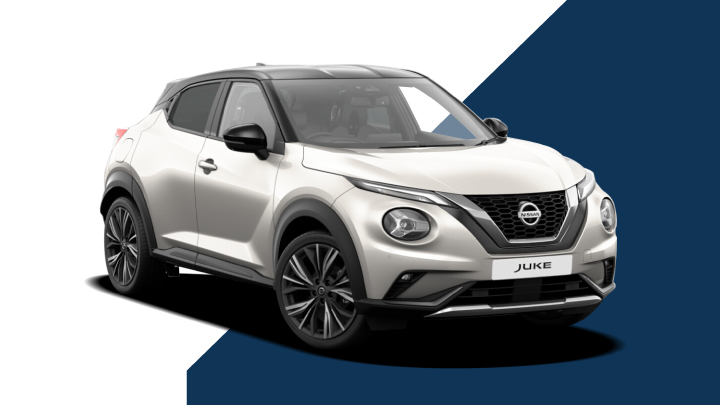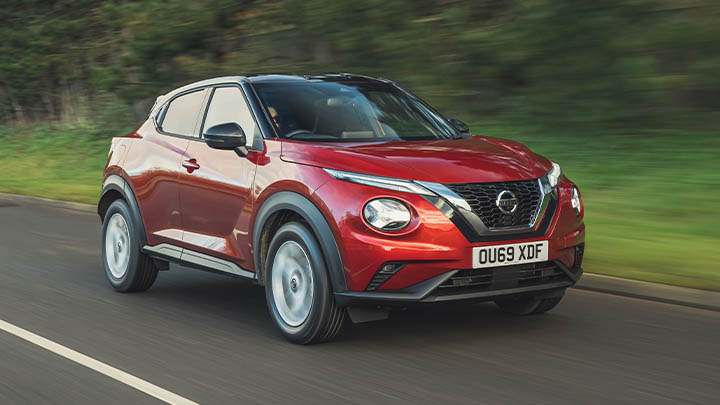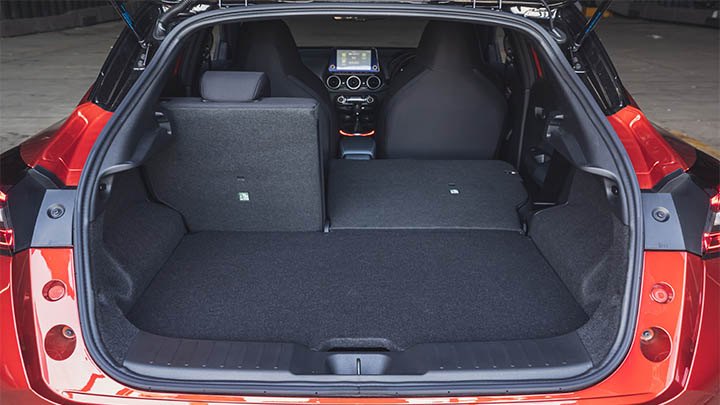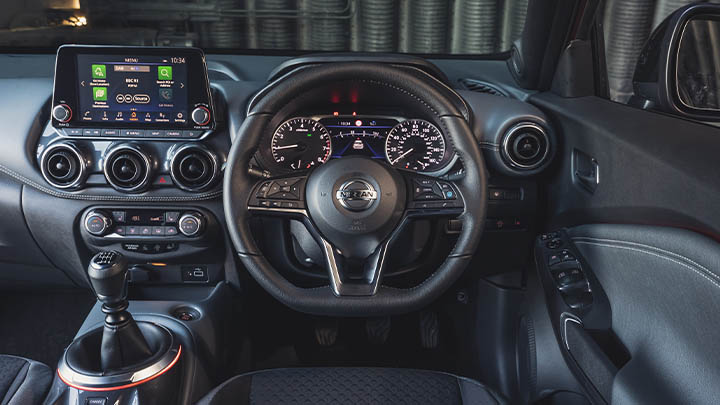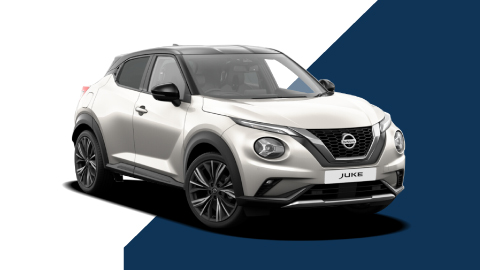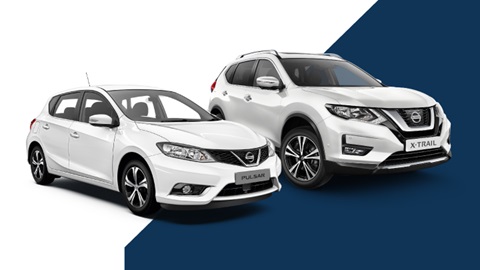
The Evans Halshaw Used Car Deal
9.9% APR Representative* and £500 EXTRA for your part exchange^ on selected used vehicles.

View All Promotions
Browse all of the latest Nissan promotions across new and used cars and vans, Motability and aftersales.
Used Nissan Juke For Sale
The Nissan Juke is a crossover that has been designed to combine the best traits of a hatchback with the benefits of an SUV.
Those who were fans of the previous generation Juke are likely to feel the same enthusiasm for this model, which was introduced in 2019. A bigger interior means there's more space for the family, while the updated interior technology makes daily driving safer while offering better connectivity.
So, why consider a Juke? Here's a brief overview:
- Quirky appearance
- Large boot for its class
- Spacious and practical cabin
- Efficient and punchy petrol engine
- Plenty of technology
Engines and Driving Experience
Typically, small crossovers aren't the most fun to drive when compared to a hatchback. However, the Juke feels relatively sharp and agile, which makes for brief bursts of excitement. Besides that, the car is comfortable on the move and in the city; although you'll have to sacrifice a bit of ride quality if you go for an example with the handsome 19-inch alloy wheels.
A 1.0-litre petrol engine is the only option currently available. Thankfully, it's a good one that recruits a turbocharger to make acceleration seamless and efficient. It develops 115bhp and combines with the Juke's relatively low kerb weight to achieve a 0 to 62mph time of 10.4 seconds.
Depending on the gearbox your chosen car has, with options being a traditional manual or a 7-speed automatic, you should be able to achieve between 44.1 and 47.9mpg with relative ease.
Practicality and Running Costs
This generation of Juke is 35mm wider and 75mm longer than its predecessor. Small margins you may think, but it translates into a cabin that's much more spacious, especially where leg room is concerned. The Juke is only available with 5-doors, making it easy to gain access to the rear, where you'll find ISOFIX anchor points for a child's seat.
The boot is nearly 60 litres bigger than the previous model (422 litres versus 354 litres), which makes it easier to store larger items; such as pushchairs. An adjustable boot floor helps to minimise the lip for convenience, while the rear split-folding 60:40 seats can turn the Juke into a van-like transporter.
Juke models don't exceed insurance group 14, meaning annual premiums should be inexpensive. All servicing and maintenance requirements can be accommodated by your nearest Evans Halshaw Nissan retailer. It's also worth considering a Nissan Service Plan to help spread the cost of maintenance.
Interior, Technology, and Safety
Nissan have been generous with the Juke's equipment levels, especially on mid-range models. The entry-level Visia is hardly spartan though, and includes Bluetooth connectivity, DAB radio and cruise control. Go up a level to Acenta if you want a rear-view camera and an 8-inch screen that comes with Android Auto and Apple CarPlay.
N-Connecta models get an additional 7-inch display in the instrument cluster, as well as climate control and keyless start. Tekna is certainly plush, and includes 19-inch alloy wheels, heated seats and a crisp sound system from Bose. A fancy two-tone paint job and various personalised extras can be found on the range-topping Tekna+.
Typical of Nissan, safety features are in good supply, with the Juke available with the following:
- Autonomous emergency braking
- Lane-keep assist
- Driver fatigue warnings
- Rear cross traffic alerts
- Blind-spot intervention
Is the Nissan Juke right for me?
If you're looking for a quirky crossover that has a similar driving experience to a regular hatchback, but has the added practicality that is associated with SUVs, then the Juke is a great choice. The low running costs and generous equipment levels are welcome bonuses that make the Juke a fine-all rounder.
The crossover segment is well-catered for, so it depends on your needs. The Peugeot 2008 offers French flair and a more intuitive infotainment system, while the Renault Captur is a similarly good all-rounder. Alternatively, if you're on a budget, but don't want to compromise on quality, then consider the Dacia Duster.
Why purchase a used Nissan Juke through Evans Halshaw?
Nationwide Locations
We have over 100 retailers located nationwide
Rated 'Excellent' on Trustpilot
With over 90,000 reviews, you're in good hands
Buy Online
Buy your next car and arrange finance from the comfort of your own home
Flexible Finance
Our flexible finance packages are tailored to your requirements
Find your ideal used car with Evans Halshaw
At Evans Halshaw, we have a variety of used cars for you to choose from. Each car is carefully selected by our teams before making its way through the rigorous preparation process, where it's inspected by a qualified technician and then fully valeted.
All our vehicles are fully HPI checked, giving you peace of mind when making a decision. We're also able to offer you a tailored Service Plan for your selected car, which allows you to spread the cost of maintenance over an agreed period of time, whilst saving you money in the process.
If you'd like some advice on picking the right car for you, or you've spotted a vehicle and want more information, please contact your nearest Evans Halshaw dealership, where one of our friendly associates will be more than happy to help.

